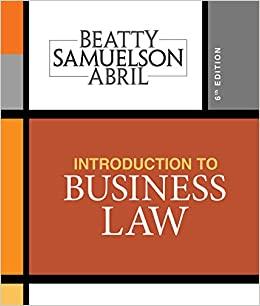Question
Task 1 Read this and answer the question below: Hohnen B. & Murphy T. (2016). The optimum context for learning; drawing on neuroscience to inform
Task 1
Read this and answer the question below:
Hohnen B. & Murphy T. (2016). The optimum context for learning; drawing on neuroscience to inform best practice in the classroom. Educational & Child Psychology Vol. 33 No. 1 75 the British Psychological Society, 2016
1.What is brain plasticity? How does this concept inform learning in the 2st century?
2.Discuss the positive cycle of learning (figure 2) in the article using your personal experience in learning a skill, concept or knowledge.
3.There is a growing popularity of integrating the neuroscience discipline in framing educational research and practice. How does this trend help enrich issues and debates in education?
4.How do we promote the "Optimum Context for Learning: A neuroscientific model" especially in learning in the new normal?
Task 2
Read this and answer the question below:
Eriksen, T.H. (2001). Small Places, Large Issues. An Introduction toSocial and Cultural Anthropology. 2nd Ed. Pluto Press. USA
Pages 1-9
- Society and culture are fields of interest in socio-cultural anthropology. How are society and culture viewed in this field?
- What is the significance of studying socio-cultural anthropology today?
- The central problem of anthropology is the diversity of human social life.To what extent do all humans, cultures or societies have something in common, and to what extent is each of them unique?
Pages 10 -23
- How did anthropology evolve overtime? What perspectives did the discipline embrace? How did these perspectives shape our views of society and culture?
- What issues and debates did each anthropological perspective seek to resolve?
How did Boas,Malinowski, Radcliffe-Brown influence Modern day anthropology particularly in examining a culture?
Pages 40-57
- How social factors mediate biological traits and vice versa?
- How does anthropology view humans?
- Whatare your achieved and ascribedstatuses? For the achieved statuses, what were the things that helped you achieve them? How your ascribed statuses did enabled you in attaining your achieved statuses?
Task 3
Read this and answer the question below:
Video:Khana, Parag (2020).Rappler Talk: Parag Khanna on the pandemic's impact on globalization.https://www.youtube.com/watch?v=hXptyaDk-M4&fbclid=IwAR0FBy6LYiv-lbML9wbzY07J1gbrQn9aeilEfWezRhkzU62pw2QJcFiCpeg
Additional Reference: Sowell, Thomas (2010). Basic Economics. A Common Sense Guide to the Economy. 4th ed. Basic Book. NY.
1.How has the pandemic impacted globalization?
2.How has the pandemic influenced global politics?
3.What insights can we draw from the discussion to help us improve our response to economic issues brought about by the pandemic?
Task 4.
1.What are the layers inside Earth?
2.how do scientists study Earth's interior?
3.What is continental drift?
4.What is the theory of plate tectonics?
5.What are the three types of tectonic plate boundaries?
Task 5
1. The planet we call Earth has how many main layers? ____________
Write them in order from the center to the outside of the planet.
___________________________________________
___________________________________________
___________________________________________
___________________________________________
2.Name the thickest layer _______________________________________
Name the thinnest layer ______________________________________
3. Write 4 interesting facts about the Earth's Crust.
a. ________________________________________________
b. ________________________________________________
c. ________________________________________________
d. _________________________________________________
4.4. The crust and the upper layer of the mantle together make up a zone of rigid, brittle rock called ___________________________________.
5. Write three amazing facts about the Mantle.
a. ___________________________________________________
b. ___________________________________________________
c. ___________________________________________________
6. What are the Convection Currents? _____________________________
________________________________________________________
7. Name two metals found in the Outer Core. __________________________ and
_________________________
The border between the Outer core and the Inner Core is how many kilometers beneath the crust? _____________
8. The Inner core is under so much pressure it does not move like a liquid, it
_____________________________________.
Write the temperature of the center of the Earth. __________________
9. Why is the Inner Core a solid if it is the hottest layer? How is that possible?
10. What is the difference between thecontinentalcrust and theoceaniccrust. List two differences. Continental Crust Oceanic Crust
___________________________ ___________________________
___________________________ ___________________________
Step by Step Solution
There are 3 Steps involved in it
Step: 1

Get Instant Access to Expert-Tailored Solutions
See step-by-step solutions with expert insights and AI powered tools for academic success
Step: 2

Step: 3

Ace Your Homework with AI
Get the answers you need in no time with our AI-driven, step-by-step assistance
Get Started


